Amidst the busy dental appointments, treatments, and patient care, there are crucial aspects that often operate in the background but hold importance. These are recordkeeping and documentation. While the primary focus in dentistry is patient health and well-being, carefully keeping records is equally needed. In a survey, dental providers agree that careful and precise recordkeeping is indispensable, emphasizing the importance of documenting elements such as patient histories, examination results, diagnoses, radiographs, treatment plans, consent forms, and clinic notes. This does not only facilitate comprehensive patient care. It also ensures dental regulatory compliance, protecting both patients and practitioners.
Understanding the Significance
Dental recordkeeping includes the systematic documentation of a patient’s oral health history, examinations, diagnoses, treatments, and outcomes. Hence, these records serve as a vital communication tool among dental professionals. If they want insights into a patient’s condition, treatment plans, and progress over time, they can access them in the records. Additionally, they play a pivotal role in legal proceedings, insurance claims, and audits.
Legal and Regulatory Framework
In dentistry, following legal and regulatory standards is essential. These include but are not limited to the following:
Health Insurance Portability and Accountability Act (HIPAA)
HIPAA has strict guidelines regarding the privacy and security of patients’ protected health information (PHI). Therefore, dental practices must implement these measures to protect PHI from unauthorized access, use, or disclosure, and to avoid fines. You can access our HIPAA Training for Dental Healthcare Providers course here.
Achieving HIPAA compliance offers numerous benefits to dental practices:
- Patient Trust
Compliance with HIPAA regulations means the practitioners are committed to patient privacy and security. Moreover, it fosters trust and confidence among patients.
- Legal Protection
Dental regulatory compliance with HIPAA reduces the risk of regulatory penalties, fines, and legal action resulting from violations of patient privacy.
- Operational Efficiency
Implementing policies and procedures for PHI protection helps administrative processes. Additionally, it reduces the likelihood of data violations.
- Competitive Advantage
Moreover, HIPAA compliance can be a differentiator in the competitive landscape. This is because patients increasingly prioritize privacy and security when choosing healthcare providers.
State Dental Practice Acts
The Dental Practice Act of each state serves as a comprehensive regulatory framework governing the conduct, licensure, and recordkeeping obligations of dental practitioners within their jurisdiction. Furthermore, these statutes delineate the ethical standards and professional responsibilities expected of dental professionals. They include principles of patient care, confidentiality, and informed consent. Moreover, the Dental Practice Act specifies the criteria and procedures for obtaining and maintaining licensure. Therefore, it ensures that practitioners meet rigorous educational and competency standards to practice dentistry legally.
Additionally, these laws mandate careful recordkeeping practices, dictating the documentation of patient assessments, diagnoses, treatments, and consent procedures. Moreover, dental regulatory compliance with the provisions of the Dental Practice Act is paramount to avoid legal repercussions, disciplinary actions, and potential harm to patients, underscoring the importance of adhering to state-specific regulatory requirements in dental practice.
You can access our course on California Dental Practice Act here.
American Dental Association (ADA) Guidelines
Through its comprehensive guidelines and recommendations, the ADA offers invaluable guidance on various aspects of dental recordkeeping, ensuring consistency and quality of documentation across dental practices. These guidelines include critical areas such as determining appropriate record retention periods, which are essential for maintaining legal dental regulatory compliance while also protecting patient information.
Furthermore, the ADA’s recommendations emphasize the importance of documenting informed consent carefully, ensuring that patients are adequately informed about their treatment options, risks, and benefits. In an era of increasing digitization, the ADA also provides guidance on effective digital record management practices, including data security measures and interoperability standards, to enhance efficiency and accessibility while keeping patient privacy. Overall, the ADA’s contributions in this domain serve to uphold the highest standards of professionalism, patient care, and dental regulatory compliance nationwide.
Best Practices in Dental Recordkeeping

To ensure legal dental regulatory compliance and uphold the highest standards of patient care, dental professionals should adopt the following best practices in recordkeeping:
Complete and Accurate Documentation
All patient records should be thorough, accurate, and up-to-date. This therefore includes detailed clinical notes, treatment plans, radiographs, laboratory reports, and correspondence with other healthcare providers.
Informed Consent Documentation
Before initiating any treatment, informed consent must be obtained from the patient or their legal guardian. Documenting this consent, along with a clear explanation of the treatment risks, benefits, and alternatives, is imperative.
Date and Time Stamps
Each entry in a patient’s record should be accompanied by a date and time stamp, indicating when the information was recorded. This helps establish a chronological timeline of the patient’s care and treatment progression.
Digital Recordkeeping Systems
Transitioning to electronic health records (EHRs) offers numerous advantages, including improved accessibility, legibility, and data security. However, it’s essential to select EHR systems that comply with HIPAA regulations and provide robust encryption and authentication features.
Regular Audits and Quality Assurance
Conducting periodic audits of patient records ensures dental regulatory compliance with legal requirements while also identifying areas for improvement in documentation practices. Additionally, implementing quality assurance protocols can help keep the integrity and accuracy of patient records.
Challenges and Solutions
Despite the importance of careful recordkeeping, dental practices often face challenges in keeping comprehensive and compliant patient records. These challenges may include time constraints, staff training issues, interoperability issues with EHR systems, and evolving regulatory requirements. However, by prioritizing education, investing in efficient recordkeeping systems, and fostering a culture of dental regulatory compliance within the practice, these challenges can be effectively addressed.
Conclusion

In modern dentistry, effective recordkeeping and documentation are indispensable pillars of patient care and legal dental regulatory compliance. By adhering to established guidelines, leveraging technology, and prioritizing accuracy and thoroughness, dental professionals can ensure that their recordkeeping practices not only dental regulatory compliance but also contribute to optimal patient outcomes and practice success. Maintain records that also uphold the trust placed in us by our patients and regulatory authorities alike.
Ready to elevate your dental practice’s compliance standards? AMC offers a comprehensive Dental Healthcare Compliance package.
This all-inclusive package covers essential training modules tailored specifically for Dental Healthcare Providers (DHCP), ensuring your practice remains compliant with state and federal regulations. Our courses in this package are carefully crafted to meet State and Federal OSHA Government-mandated training requirements, providing you with peace of mind and confidence in your practice’s adherence to regulatory standards. Check out the course bundle here.



